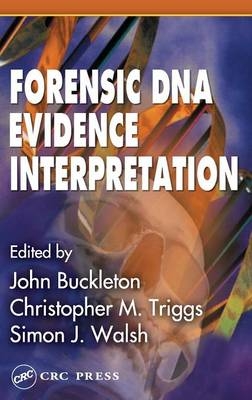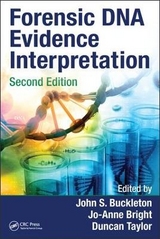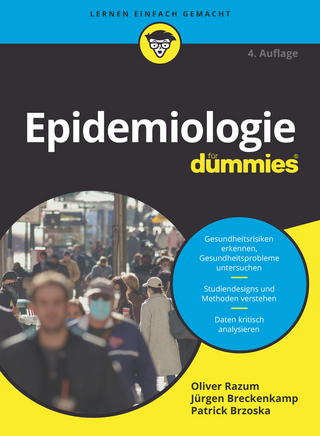
Forensic DNA Evidence Interpretation
Crc Press Inc (Verlag)
978-0-8493-3017-9 (ISBN)
- Titel erscheint in neuer Auflage
- Artikel merken
Forensic DNA Evidence Interpretation is the most comprehensive resource for DNA casework available today. Written by leaders in the fields of biology and statistics, the book emphasizes the interpretation of test results and provides the necessary formulae in an easily accessible manner.
The book begins by reviewing all pertinent biology, and then provides information on every aspect of DNA analysis, including modern interpretation methods and issues, and contemporary population genetic models available for estimating DNA frequencies or likelihood ratios. Following a chapter on procedures for validating databases, the text presents overviews and performance assessments of both modern sampling uncertainty methods and current paternity testing techniques. Later chapters discuss the latest methods for mixture analysis, LCN (ultra trace) analysis, and non-autosomal (mito, X, and Y) DNA analysis. The text concludes with procedures for disaster victim identification and information on DNA intelligence databases.
Supported by numerous tables and over 800 references, this authoritative book provides a link among the biological, forensic, and interpretative domains of the DNA profiling field. It is a valuable resource that allows forensic scientists and technicians, molecular biologists, and attorneys to use forensic DNA evidence to its greatest potential.
Biological Basis for DNA Evidence, Peter Gill and John Buckleton
Historical and Background Biology
Understanding PCR Profiles
A Framework for Interpreting Evidence, John Buckleton
The Frequentist Approach
The Logical Approach
The Full Bayesian Approach
A Possible Solution
A Comparison of the Different Approaches
Population Genetic Models, John Buckleton
Product Rule
Simulation Testing
Discussion of the Product Rule and the Subpopulation Model
A Complex Case Example - DNA Evidence and Orethral James Simpson
Relatedness, John Buckleton and Christopher Triggs
Conditional Probabilities
Joint Probabilities
The Unifying Formula
The Effect of Linkage
Validating Databases, John Buckleton
Which Is the Relevant Population?
Population Databases
Validating the Population Genetic Model
Estimating Q
Descriptive Statistics for Databases
Sampling Effects, John Buckleton and James Curran
Bounds and a Level
Methods for Assessing Sampling Uncertainty
Minimum Allele Probabilities
Discussion of the Appropriateness of Sampling Uncertainty Estimates
Mixtures, Tim Clayton and John Buckleton
Frequentist Approaches
Bayesian Approaches
Statistical Evaluation of Mixtures
Low Copy Number, John Buckleton and Peter Gill
Changes in LCN Profile Morphology
The Interpretation of LCN Profiles
Non-autosomal Forensic Markers, Simon Walsh, SallyAnn Harbison, and John Buckleton
Forensic Mitochondrial DNA Typing
Forensic Y Chromosome Analysis
Forensic X Chromosome Analysis
A Famous Case Example - The Romanovs
Parentage Testing, John Buckleton, Tim Clayton, and Chris Triggs
Evaluation Of Evidence
Paternity Trios: Mother, Child and Alleged Father
Non-autosomal DNA
Use of the Sub-Population Model of Balding and Nichols to Evaluate the Paternity Index
Relatedness in Paternity Cases
Multiple Children
Inconsistencies in the Mendelian Pattern
'Exclusions'
Paternity Trios: Mother, Child and Alleged Father Considering the Possibility of Silent (Null) Alleles
Disaster Victim Identification, Identification of Missing Persons, and Immigration Cases, John Buckleton, Chris Triggs, and Tim Clayton
Mitochondrial or Nuclear DNA?
Human Remains - Obtaining a Profile from Bodily Remains
Extraction of DNA from Bone, Tooth, Hair and Nail
Complicating Factors
DNA Intelligence Databases, Simon Walsh and John Buckleton
A Brief History
Functional Aspects
Legislation
Aspects of Forensic Significance
Social and ethical considerations
Interpretation Issues Associated with DNA Databases
| Erscheint lt. Verlag | 29.11.2004 |
|---|---|
| Zusatzinfo | 612 equations; 147 Tables, black and white; 77 Illustrations, black and white |
| Verlagsort | Bosa Roca |
| Sprache | englisch |
| Maße | 156 x 234 mm |
| Gewicht | 898 g |
| Themenwelt | Studium ► Querschnittsbereiche ► Epidemiologie / Med. Biometrie |
| Naturwissenschaften ► Biologie ► Genetik / Molekularbiologie | |
| Recht / Steuern ► Strafrecht ► Kriminologie | |
| ISBN-10 | 0-8493-3017-3 / 0849330173 |
| ISBN-13 | 978-0-8493-3017-9 / 9780849330179 |
| Zustand | Neuware |
| Informationen gemäß Produktsicherheitsverordnung (GPSR) | |
| Haben Sie eine Frage zum Produkt? |
aus dem Bereich



